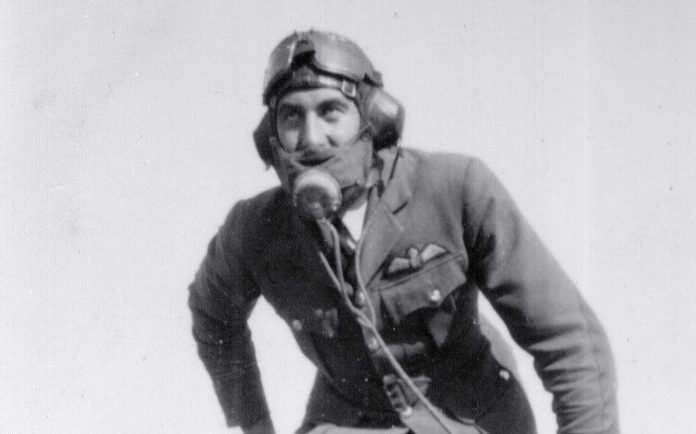Squadron Chief Keith Lawrence, who has died aged 96, was one in every of solely two surviving New Zealand-born Battle of Britain fighter pilots; he later flew within the fierce air battles of the Battle of Malta.
Lawrence was flying a Spitfire of No 234 Squadron when he broken a German bomber on July 8 1940, the squadron’s first success. He went on to break three extra enemy plane together with a Messerschmitt Bf 110, which ditched within the English Channel. On September 7 the Luftwaffe made its first heavy daylight raid on London. Lawrence was scrambled and, after attacking a bomber, he chased a Messerschmitt Bf 109 to the coast and shot it down south of Folkestone.
When his squadron moved to Cornwall for a relaxation, he transferred to No 603 Squadron and through the fierce preventing on September 15, Battle of Britain Day, he shot down one other Bf 109 and noticed his gunfire hit two others.
In October Lawrence joined a brand new unit at Gravesend in Kent. On November 23 he broken a Bf 110 fighter throughout a climate reconnaissance flight however 4 days later was attacked by a Bf 109. One wing of his Spitfire was blown off and Lawrence discovered himself falling with a ineffective proper arm. He managed to deploy his parachute and landed within the sea. He was picked up by a minesweeper and brought to Ramsgate, the place he was admitted to hospital with a damaged leg and dislocated arm.
The eldest son of a New Zealand Regiment sergeant severely wounded at Passchendaele, Keith Ashley Lawrence was born at Waitara, New Zealand, on November 25 1919 and attended Southland Boys’ Excessive Faculty at Invercargill. He joined the Civil Reserve of Pilots in February 1938 earlier than being accepted by the RAF. He left for the UK in January 1939 and was commissioned in November 1939, when he joined No 234 in Yorkshire.
After nearly a 12 months recovering from his accidents, Lawrence returned to his outdated unit, however in February 1942 he left for Malta the place he joined No 185 Squadron as a flight commander to fly Hurricanes.
Over the following 4 months Lawrence flew intensively, main many patrols through the interval when Malta was coming underneath very heavy assault. Working from Hal Far airfield he engaged giant enemy bomber formations, gaining his first success on March 23 when he shared within the destruction of a Junkers Ju 88 bomber. The German crew took to their dinghy after crashing into the ocean.
Scrambled every day to satisfy the German bomber formations, typically involving greater than 40 plane, Lawrence and his pilots additionally flew patrols to guard the very important re-supply convoys, which got here underneath fixed hearth as they approached the island. Lawrence broken numerous enemy plane and on Could 9 he shot down a Junkers 87 Stuka dive-bomber over Valetta. The next day he accounted for one more Stuka because it dive-bombed transport in Grand Harbour.
After re-equipping with Spitfires, Lawrence took command of No 185 Squadron, at which level he determined to dispense together with his trademark moustache. He continued to steer formations through the fierce preventing till he was rested, returning to Britain in August.
For his service in Malta, Lawrence was awarded the DFC. The quotation recorded his “nice braveness and excellent keenness particularly when the percentages had been nice”.
He turned an teacher, coaching fighter pilots earlier than serving as a liaison officer with the USAAF fighter models primarily based in East Anglia. In October 1943 he was posted to the Central Gunnery Faculty to coach as a gunnery teacher, earlier than returning to fighter coaching models to move on his experience.
Lawrence was eager “to do his bit” and he volunteered for a 3rd tour of operations. He joined No 124 Squadron in early February 1945, flying Spitfires on dive-bombing assaults in opposition to V-2 rocket launching websites in Holland and on interdiction and bomber escort missions. By the tip of the warfare he had flown an additional 50 sorties.
In August the squadron transformed to the Gloster Meteor and Lawrence flew 56 sorties within the RAF’s first jet fighter earlier than leaving for New Zealand in March 1946. He served with the RNZAF as an air visitors controller and returned to the UK in 1954 to run varied industrial enterprises.
He retired at 65 and settled in Devon, the place he flew with the Devon and Somerset Gliding Membership for 18 years. In 2002, as a part of the Queen’s Golden Jubilee celebrations, the Battle of Britain Fighter Affiliation nominated him for a flight in a Spitfire, which he was delighted to simply accept 57 years after his first flight within the fighter.
In 2010, the seventieth anniversary of the Battle of Britain, Lawrence was invited to characterize “the Few” in a brief sequence for the BBC filmed on the Battle of Britain Memorial at Capel-le-Ferne on the Kent coast.
Lawrence was a lifelong Christian Scientist, and was each clerk and treasurer of the Exeter church for a few years after his retirement.
Keith Lawrence married Kay Harte in July 1945; she survives him with their three sons and two daughters.
Squadron Chief Keith Lawrence, born November 25 1919, died June 2 2016














